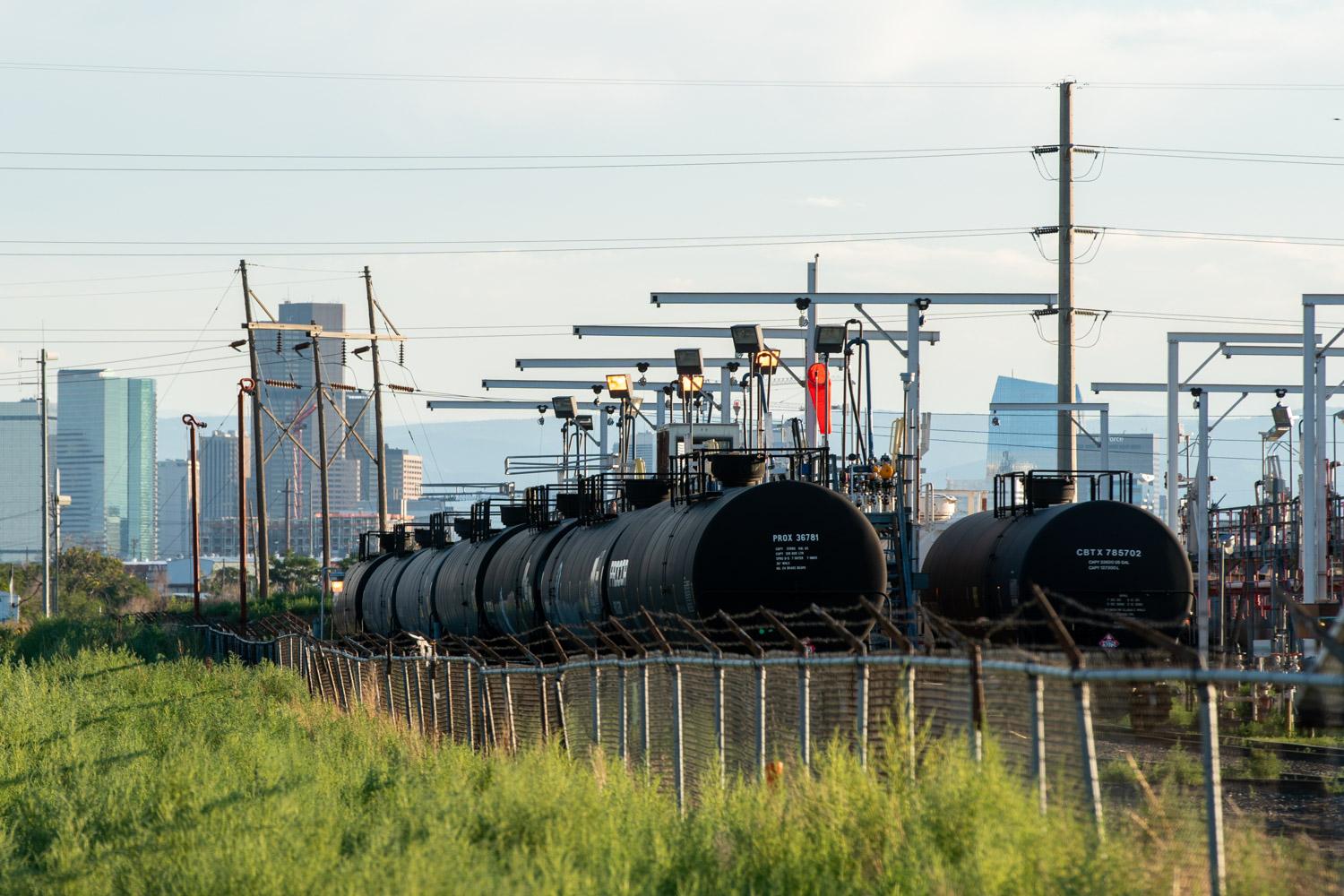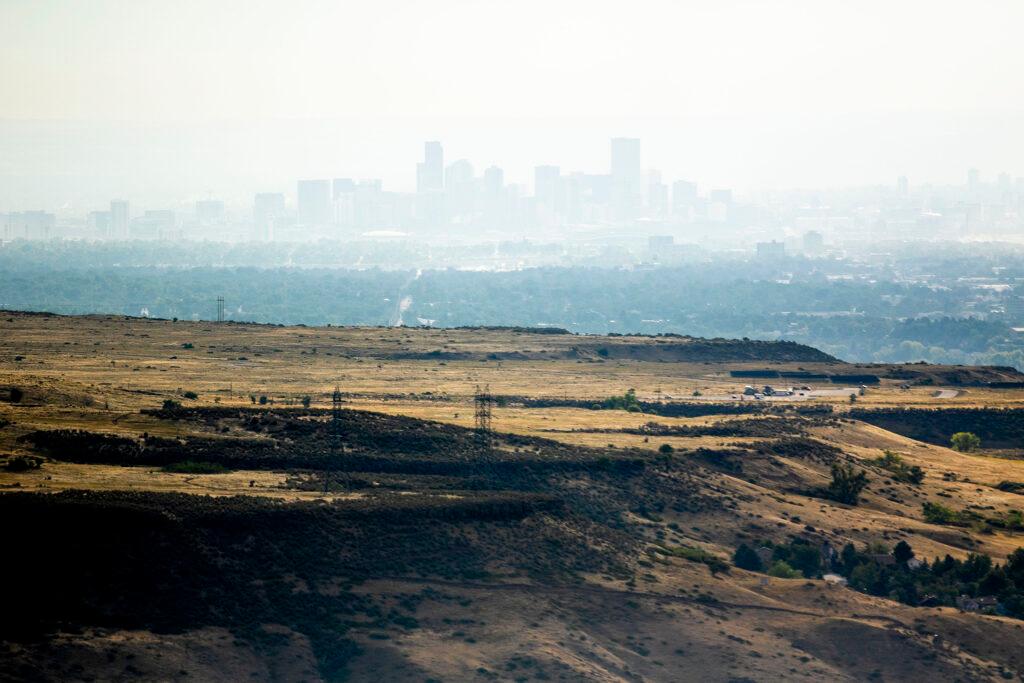
Colorado air regulators withdrew large parts of a draft plan to cut ozone pollution Friday, acknowledging that it underestimated emissions coming from some oil and gas drilling and hydraulic fracturing operations.
The admission, detailed in a notice sent to state air commissioners, sends regulators back to the drawing board as they attempt to bring Front Range air quality into compliance with federal health standards.
It also invites new scrutiny onto the state's oil and gas industry, which the state already recognized as the region's largest source of local ozone ingredients — even before they acknowledged the latest data error.
Environmental groups praised the latest decision. After criticizing an initial ozone plan released in June, they now see an opportunity to push for new air quality regulations, including rules to limit fracking operations during the summertime ozone season or requiring cleaner, electric drilling rigs.
"They're not trying to cover up their mistakes, but actually owning them and acknowledging some hard decisions need to be made," said Jeremy Nichols, the climate program director for WildEarth Guardians, an environmental advocacy group.
Colorado air regulators now plan to rewrite large parts of the state's ozone plan before submitting it to federal regulators next year. Lorena Gonzalez, who leads the climate campaign with Conservation Colorado, said the move is appropriate amid what's become an "ozone crisis" on the Front Range.
"Chronically high ozone levels put the public at risk, so it really is time we get this situation figured out," Gonzalez said.
Colorado is racing to rework its air quality regulations after repeatedly failing to bring Front Range ozone pollution below federal health standards.
The pollutant is a well-studied lung irritant linked to many health problems, including asthma, lower birth weights and premature death.
Ground-level ozone usually isn't emitted directly into the atmosphere from tailpipes and smokestacks. It comes from a range of sources — cars, factories, wildfires, oil and gas operations — that emit nitrogen dioxide and hydrocarbons into the air. Those "primary pollutants" react in the atmosphere amid heat and sunlight to produce ozone.
On the Front Range, most ozone pollution comes from out-of-state "background" pollution, but local sources are responsible for pushing concentrations above federal health standards. Estimates in the state's latest ozone plan show the oil and gas industry is the largest single source of local ozone ingredients followed by cars and other vehicles.
The federal government has demanded the state take immediate action. In September, the U.S. Environmental Protection Agency reclassified a nine-county area stretching from Fort Collins to Castle Rock as a "severe" ozone violator under its 75-parts-per-billion health standard. The agency also maintains a 70-parts-per-billion standard, which it adopted in 2015 to acknowledge growing concern from medical experts about ozone exposure. It named the region a "moderate" violator under the tougher threshold.
A plan to bring the region into compliance fell to the Regional Air Quality Council, the lead air quality planning agency for metro Denver. It released a draft of the plan in August before submitting it to the Colorado Air Pollution Control Division.

Those state regulators have now recognized a flaw in the data underlying the draft.
The plan included emissions estimates of oil and gas preproduction operations, like drilling, hydraulic fracturing and well venting.
Matt Sura, an environmental lawyer currently working with Conservation Colorado, said he started to question the math behind those estimates while reviewing a plan to drill new wells in Weld County. PDC Energy, the company behind the plan, submitted data showing the preproduction process for each new well would emit almost twice the total amount of nitrogen dioxide than the estimates included in the state ozone plan, Sura said.
Sura brought the discrepancy to the attention of state air regulators.
In their notice explaining their calculation error, the Air Quality Control Division noted the plan relied on industry data from 2017, which explained the wide gap in emission estimates. After recalculating using the new numbers, estimates for ozone-causing emissions from total pre-dilling operations shot up drastically. Estimates for a class of air pollutant known as volatile organic compounds rose to 8 metric tons from 7 tons — an 11 percent increase. Estimates for nitrogen dioxide releases rose to 33 tons from 17 metric tons — a 96 percent jump.
The Colorado Air Quality Control Commission was set to vote on the ozone plans next month. Due to the miscalculation, the division notified commissioners it would withdraw large pieces of the plan to meet the EPA's looser standard of 75 parts per billion and revisit any new regulations next year.
Lynn Granger, the executive director of the American Petroleum Institute of Colorado, said what appears to be an "unintentional error" won't deter the state's oil and gas companies from continuing to improve their operations and reduce their overall impact on air quality.
“Our industry remains committed to meeting the goals set forth in the state’s greenhouse gas roadmap, and we look forward to continuing our work with state agencies and other stakeholders as we pursue our shared objectives,” Granger said
To the disappointment of some environmental groups, the division still plans to proceed with a separate plan to bring ozone levels in line with the tougher 70-parts-per-billion standard, even though regulators have already acknowledged that it’s not sufficient to meet the threshold by a 2024 federal deadline.
Mike Silverstein, the director of the Regional Air Quality Council, has said there’s no chance the Front Range will meet the deadline and that submitting the inadequate plan is a strategy to buy more time. Once the EPA downgrades the region from a "moderate" to a "serious" violator under the tougher standard, the region will have until 2026 to meet the stricter standard. Since the same deadline applies to the looser standard, the region can align around a four-year plan to reduce ozone emissions.
Environmental groups have criticized the strategy as both cynical and illogical. Nichols, the advocate for WildEarth Guardians, said the state should instead submit a plan with a reasonable chance of following federal law.
“They're basically saying ‘we already concluded that plan will fail, so we're just not gonna deal with it, even though the emissions estimates are wrong,’” Nichols said. “We’ve been arguing they can’t legally adopt a plan that’s going to fail.”









